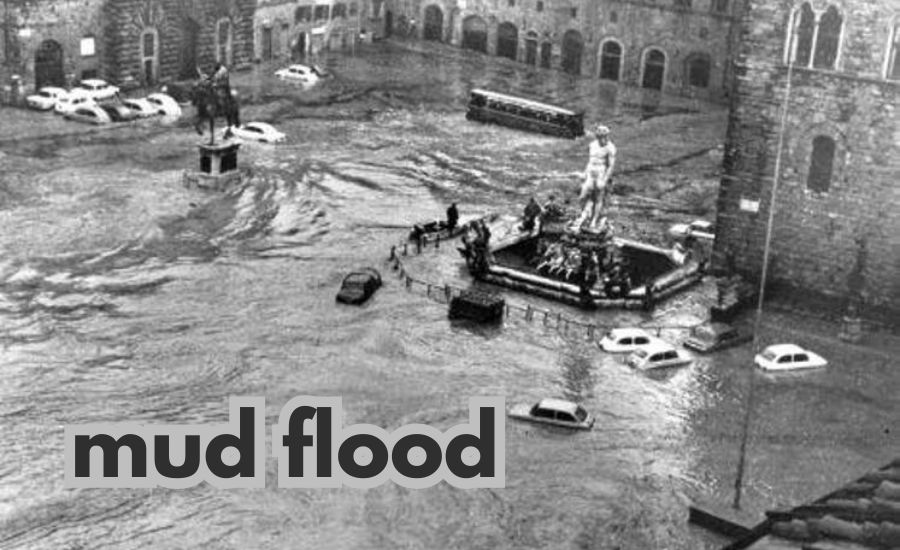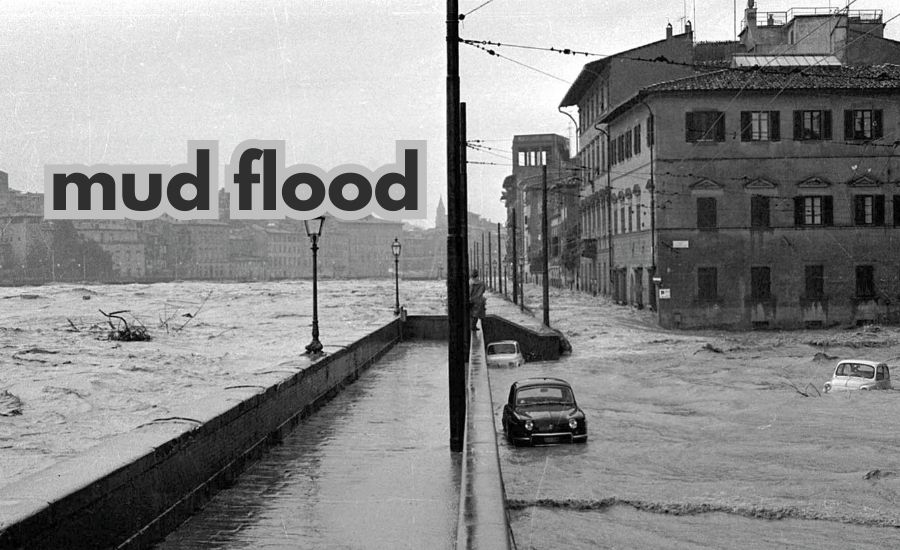The “mud flood” phenomenon has captured the curiosity of history enthusiasts and researchers alike. This mysterious event, believed to have buried cities and civilizations under layers of mud, is a topic that continues to spark debate and intrigue. Here at US NOWADAYS, we dive deep into the mud flood theory, uncovering evidence, exploring alternative explanations, and revealing hidden histories that are often overlooked. Let’s journey through the possibilities and uncover what really lies beneath the surface of this captivating mystery.
The Origins of the Mud Flood Theory
The term “mud flood” might sound simple, but the theory suggests a complex, global event that left buildings and entire cities buried under layers of earth. Advocates of the mud flood hypothesis believe that a sudden, possibly cataclysmic event occurred, wiping out entire civilizations and reshaping history. But where did this idea come from?
Many supporters trace the origins of the mud theory back to architectural anomalies. Certain older buildings, particularly in Europe and North America, have lower windows, doors, or floors that appear to be partially buried. While mainstream historians argue this is due to landscaping or structural renovations, flood enthusiasts see it as evidence of a buried past.
Historical Evidence of a Buried Past
One of the main arguments in favor of the mud flood theory is the presence of partially buried buildings around the world. From Russia to the United States, buildings with subterranean levels have raised questions.
These structures often have ground-level windows that are partially or fully buried, and advocates suggest they are remnants of a lost civilization. While mainstream experts argue that soil erosion or urban development likely caused these anomalies, the mud flood theory offers an alternative explanation that has captivated a loyal following.
Architectural Anomalies: Real Evidence or Just Construction Choices?
When examining older buildings, mud flood theorists point to certain architectural designs that seem out of place. Buildings with ground-level doors and windows submerged beneath the earth are cited as proof of an ancient flood of mud that transformed cityscapes worldwide. But is there another explanation?
Mainstream historians often attribute these structures to changing urban landscapes, sediment buildup, and construction techniques. In many cases, buildings were built below the modern ground level simply because cities were built up over time. Still, proponents of the flood theory find these answers unsatisfactory and continue to dig for deeper truths.

Exploring the Theory of Lost Civilizations
The mud flood theory is closely connected to ideas about lost civilizations, particularly the fabled land of Tartaria. According to this theory, Tartaria was a massive, technologically advanced civilization that spanned much of Asia and Europe but was erased from history. Mud theorists argue that this civilization’s achievements were buried alongside it, hidden from mainstream knowledge.
Some alternative historians believe that the mud flood was an intentional act to reset civilization and control knowledge. While this claim lacks substantial evidence, the idea of hidden history remains appealing to those who question mainstream historical narratives.
Read Next: Ohirok Vadum
What Mainstream Historians Say
Traditional historians dismiss the mud flood theory as pseudoscience, citing a lack of geological evidence for a sudden global flood of mud. They argue that what appears to be buried buildings and “submerged” architecture can be explained by standard construction practices, natural soil shifts, and urban redevelopment.
Historians also emphasize the reliability of archaeological methods and geological records. For them, the mud flood theory is based more on imagination and selective interpretation of architectural quirks rather than on verifiable scientific data.
Natural Causes vs. Catastrophic Events
The mainstream explanation for these partially buried buildings often involves natural causes, such as soil erosion, sediment buildup, and human modifications to urban areas. In cities with long histories, like Rome or Paris, it’s common to find streets and structures that have been built up over centuries.
Mud flood theorists, however, believe these explanations ignore the sheer scale of buried architecture across continents. They argue that natural causes alone cannot account for the depth and spread of buried structures, suggesting instead that a single cataclysmic event must have been responsible.
Modern Investigations into the Mud Flood Theory
Recently, independent researchers and citizen historians have started investigating the mud flood hypothesis with renewed energy. Social media platforms and internet forums are full of mud flood enthusiasts sharing photographs, theories, and evidence that they believe validates their claims.
Though these investigations are often dismissed by the academic community, the movement continues to grow. flood enthusiasts argue that mainstream scholars are reluctant to entertain alternative historical narratives and suppress dissenting theories. However, reputable scientific bodies maintain that substantial evidence for such a global event is lacking.

Why People Are Fascinated by the Mud Flood Theory
The mystery of the mud flood captivates people because it questions what we think we know about history. It raises questions about historical accuracy, the reliability of mainstream narratives, and the possibility that major events have been hidden or misinterpreted.
For many, the mud flood theory represents an exciting possibility that history may hold more mysteries than we realize. The idea of a hidden civilization buried under our feet is a powerful image that captures the imagination and fuels a passion for alternative historical explanations.
Conclusion
The mud flood theory, while controversial, encourages us to look at history with a questioning eye. Whether or not a global mud flood actually occurred, the theory challenges us to explore our understanding of the past and consider the unknown possibilities beneath our feet. At US NOWADAYS, we believe that asking questions and exploring theories, even unconventional ones, enriches our view of history and helps us appreciate the mysteries of the world.
FAQs
Q: What is the mud flood theory?
A: The mud flood theory suggests that a massive flood of mud buried cities and civilizations, hiding historical truths.
Q: Is there proof of a mud flood event?
A: Mainstream historians find no solid geological evidence of a global mud flood, attributing buried structures to urban development.
Q: Why do some buildings have buried floors or windows?
A: Many older buildings appear partially buried due to soil shifts, urban expansion, and sediment buildup over centuries.
Q: Was there a lost civilization like Tartaria?
A: Tartaria is a concept from alternative history, suggesting a lost civilization, though mainstream history doesn’t recognize it.
Q: Why is the mud flood theory popular?
A: The theory appeals to those who enjoy exploring alternative histories and questioning mainstream historical narratives.
Explore the Latest Blogs on: Us Now A Days.com










